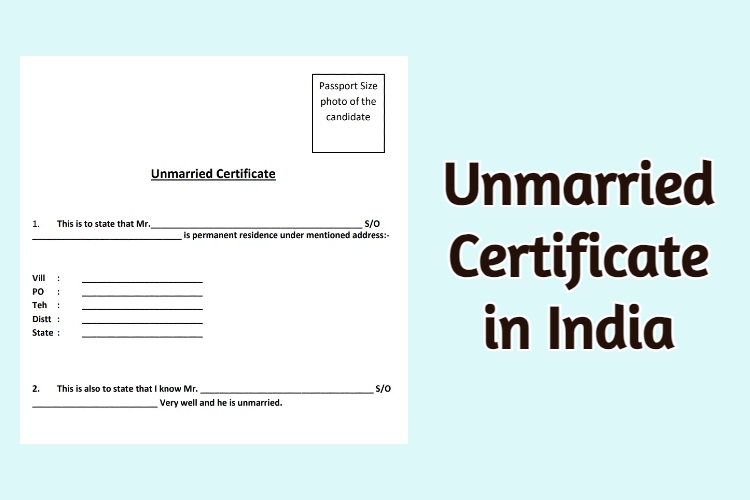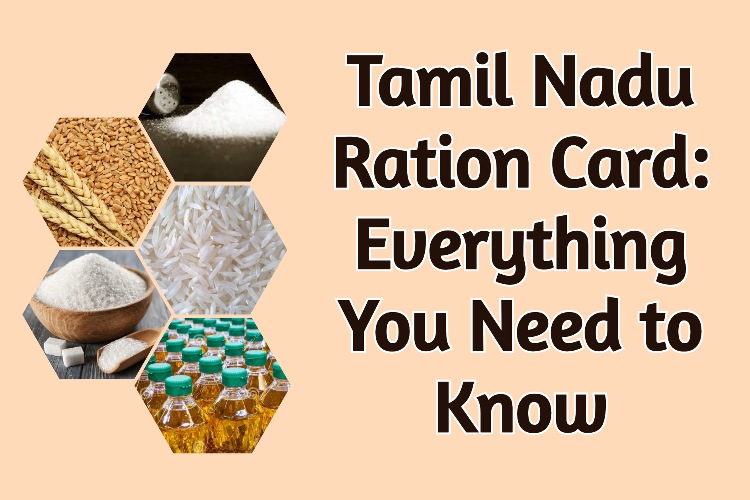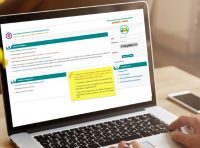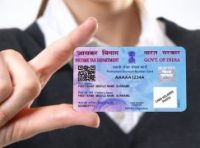India, with its diverse cultures, also has a caste system that has affected many people’s lives. Some groups, like the SC & ST, face social and economic challenges due to this system. To assist these communities, the Indian government has introduced programs such as the Dr. Ambedkar Scheme for Inter-Caste Marriages. These programs also offer age exemptions in government exams, but you need a Non-creamy layer certificate.
But what exactly is this Non-creamy layer certificate?
It’s a document, also known as an OBC (Other Backwards Class) NCL certificate, provided to certain eligible individuals. Former Prime Minister V. P. Singh introduced it in 1993. This OBC NCL certificate helps you get special seats in universities and apply for certain jobs in government and private companies. If you’re curious about your eligibility and how to get an OBC-NCL certificate, read on to unlock new possibilities.
Eligibility Criteria for a Non-Creamy Layer Certificate:
To apply for Central Government jobs and competitive exams, it is necessary to have a OBC certificate. The OBC Non Creamy Layer Certificates are only valid for one year from the date of issue.
Based on a person’s caste and their parents’ income, the OBC certificate divides into Creamy and Non-Creamy layers. If the income is more than 8 lakh, you are in the Creamy Layer. If the income is less than 8 lakh, you are in the Non-Creamy Layer.
To get a non-creamy layer certificate, you need to meet these requirements:
- You must be an Indian citizen.
- At least one parent works for Group C or D in the central government or Group II, III, or IV in any state government.
- If you work for the Tamil Nadu State Government or Group B in the Central Government, you’re also eligible.
- If your parents don’t have any income, you can apply for a non-creamy layer certificate.
- Even if your husband is a government employee and your wife’s parents have no income, she can still apply for an OBC certificate.
Exceptions on Applying for Non Creamy Layer Certificate
Even if you’re in the OBC category, you won’t be eligible to apply for NCL certificate if:
- Your caste isn’t listed by the Central Government as OBC, even if it’s BC or MBC.
- Your parents work in high-ranking Central Government jobs like IAS, IPS, or IFS.
- Your parents annual income is more than ₹8 lakhs.
- Your parents work for Group B in the Central Government or Group I in the State Government.
Required Documents for Non-Creamy Layer Certificate:
Following documents are required to apply for the Non Creamy Layer certificate:
- Proof of Identity (Aadhaar Card, PAN Card, Voter ID, Driving License or Passport)
- Proof of Residency (Aadhaar Card, Passport, Ration Card, Voter ID, Electricity bill, Telephone bill or Property tax receipt)
- Passport Size Photo
- Income Certificate or Income Proof
- Community Certificate
- Affidavit for caste
- Proof of your parent’s caste, or a relative’s if your parents aren’t around.
- Proper documents from where you used to live (home state) if you migrated.
- Proof of your caste before and after marriage, and a name change certificate if you are married married.
- If you’re Muslim, a certificate issued from a Muslim Society will work.
How to Apply for an Non-Creamy Layer Certificate?
You can request an Non-creamy layer certificate through both online and offline methods. Here’s how it’s done:
Applying Online for an Non-Creamy Layer Certificate
Step 1: Visit your state’s social welfare website.
Step 2: Select “Apply for Caste Certificate.”
Step 3: Create an account and complete the online application form with the necessary information.
Step 4: Upload your documents and submit the details.
Step 5: You’ll receive an application ID to track your request’s progress.
Step 6: Once verified, you can download the certificate from the website.
Applying Offline for an Non-Creamy Layer Certificate
Step 1: Obtain an application form from a local Tehsildar or Revenue office.
Step 2: Accurately fill out the application with the required details.
Step 3: If you’ve migrated, provide the necessary documents from your home state.
Step 4: If the father is absent, submit a blood relative’s caste certificate.
Step 5: Sign the self-attestation section, attach a passport-size photo, and submit the form with the documents.
Step 6: After verification, you’ll receive your certificate within 30 to 35 days of submission.
The classification of the OBC category into creamy and non-creamy layers aims to ensure fair distribution of benefits and privileges to those in our society who belong to the backward classes. A non-creamy layer certificate is designed to assist those who genuinely require support and assistance.
Non Creamy Layer Certificate Application Form
How to Check Non Creamy Layer Application Status?
You can follow the below steps to check the status for NCL certificate:
- Go to the official site of your State or Government territory.
- Find the link in the webpage for “Backward Classes Welfare Department” or “Revenue Department” and inside it look for the option of checking the status of Non Creamy Layer Certificate.
- Fill in the application details and other personal details required.
- You will be redirected to the page with your application status.
- You can also get the status by contacting the responsible department by in person visit or on call.
How Long Does it Take to Get the OBC NCL Certificate?
The Public Servant assigned with the process will issue/reject the Certificate on the basis of report of concerned Circle Officer within 5 (five) days from the date of receipt of the report .The complete process of issuing the Non-Creamy Layer Certificate will be completed within a maximum of 30(thirty) working days.
List of Government Websites to Apply for a Non-Creamy Layer Certificate:
| Sr. No. | State | Online Portal |
|---|---|---|
| 1 | Andhra Pradesh | Official Portal – Non Creamy Layer Certificate Andhra Pradesh |
| 2 | Arunachal Pradesh | e-Services Portal – Non Creamy Layer Certificate Arunachal Pradesh |
| 2 | Assam | e-District Services Portal – Non Creamy Layer Certificate Assam |
| 3 | Bihar | RTPS Portal – Non Creamy Layer Certificate Bihar |
| 4 | Chhattisgarh | e-district Portal – Non Creamy Layer Certificate Chhattisgarh |
| 5 | Goa | Online Portal – Non Creamy Layer Certificate Goa |
| 6 | Gujarat | Digital Gujarat Portal – Non Creamy Layer Certificate Gujarat |
| 7 | Haryana | e-Disha Portal – Non Creamy Layer Certificate Haryana |
| 8 | Himachal Pradesh | e-District Portal – Non Creamy Layer Certificate Himachal Pradesh |
| 9 | Jharkhand | JharSewa Portal – Non Creamy Layer Certificate Jharkhan |
| 10 | Karnataka | Nadakacheri-AJSK Portal – Non Creamy Layer Certificate Karnataka |
| 11 | Kerala | Akshaya Portal – Non Creamy Layer Certificate Kerala |
| 12 | Madhya Pradesh | e-District Portal – Non Creamy Layer Certificate Madhya Pradesh |
| 13 | Maharashtra | Aaple Sarkar Portal – Non Creamy Layer Certificate Maharashtra |
| 14 | Manipur | e-District Portal – Non Creamy Layer Certificate Manipur |
| 15 | Meghalaya | e-District Portal – Non Creamy Layer Certificate Meghalaya |
| 16 | Mizoram | e-District Portal – Non Creamy Layer Certificate Mizoram |
| 17 | Nagaland | e-District Portal – Non Creamy Layer Certificate Nagaland |
| 18 | Odisha | e-District Portal – Non Creamy Layer Certificate Odisha |
| 19 | Punjab | State Portal – Non Creamy Layer Certificate Punjab |
| 20 | Rajasthan | e-Mitra Portal – Non Creamy Layer Certificate Rajasthan |
| 21 | Sikkim | e-Services Portal – Non Creamy Layer Certificate Sikkim |
| 22 | Tamil Nadu | e-Sevai Center – Non Creamy Layer Certificate Tamil Nadu |
| 23 | Telangana | MeeSeva Portal – Non Creamy layer Certificate Telangana |
| 24 | Tripura | e-District Portal – Non Creamy Layer Certificate Tripura |
| 25 | Uttar Pradesh | e-Saathi Web Portal – Non Creamy Layer Certificate Uttar Pradesh |
| 26 | Uttarakhand | e-District Portal – Non Creamy Layer Certificate Uttarakhan |
| 27 | West Bengal | e-District Portal – Non Creamy Layer Certificate West Bengal |
| 28 | Andaman and Nicobar Islands | Official Portal – Non Creamy Layer Certificate Andaman & Nicobar Administration |
| 29 | Chandigarh | Sampark Portal – Non Creamy Layer Certificate Chandigarh |
| 30 | Dadra and Nagar Haveli | Official Portal – Non Creamy Layer Certificate Dadra and Nagar Haveli Administration |
| 31 | Daman and Diu | Official Portal – Non Creamy Layer Certificate Daman and Diu Administration |
| 32 | Delhi | e-District Portal – Non Creamy Layer Certificate Delhi |
| 33 | Jammu and Kashmir | Revenue Department – Non Creamy Layer Certificate Jammu and Kashmir. |
| 34 | Ladakh | Official Portal – Non Creamy Layer Certificate Ladakh |
| 35 | Lakshadweep | Official Portal – Non Creamy Layer Certificate Lakshadweep |
| 36 | Puducherry | e-District Portal – Non Creamy Layer Certificate Puducherry. |
Frequently Asked Questions (FAQs):
Is non creamy layer certificate and OBC certificate the same or different?
Ans: The main difference between a non-creamy layer certificate and an OBC certificate is the income limit. If your family earns more than 8 lakhs per year, you’re usually considered OBC creamy layer. If it’s less than 8 lakhs, you’re OBC non-creamy layer.
What happens if I am OBC but not NCL?
Ans: If you’re OBC but not in the non-creamy layer, you should apply as a general candidate for most situations. If you apply as OBC non-creamy layer and later find out you don’t meet the criteria, you might be treated as a general applicant.
Is non creamy layer and OBC the same?
Ans: No, they’re not the same. OBC members in the creamy layer don’t get the benefits of reservation, while those in the non-creamy layer can avail of reservation benefits.
What happens if I’m OBC but not NCL?
Ans: If you’re OBC but not in the non-creamy layer, it’s best to apply as a general candidate. If you apply as OBC non-creamy layer and later find out you don’t qualify, you may be considered a general applicant.
How long is the NCL OBC certificate valid?
Ans: Usually, the OBC NCL Certificate issued by the Central Government is valid for 1 year, but this might vary from one state to another.
Who can issue central OBC NCL certificate?
Ans: The OBC NCL Certificate can be issued by the relevant government authorities (Tehsildar), often at the district or state level.









